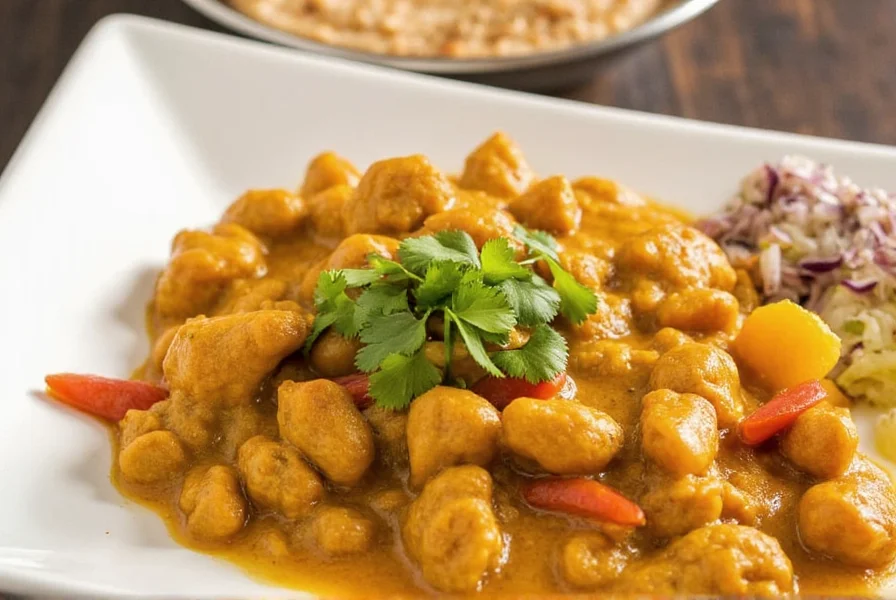What Exactly is Curry? The Truth Behind the Spice
Curry isn't a single spice—it's a category of dishes with regional variations across the globe. In India, locals don't use "curry" as a term; it's a British colonial label for spiced stews. In Japan, it's sweet and thick. In Thailand, it's vibrant and coconut-based. Understanding this distinction is key to using curry correctly in cooking.
Curry: Spice Blend or Dish? The Definitive Answer
Curry is both a spice blend and a dish category, depending on context. Here's how they differ:
| Aspect | Curry as a Spice Blend | Curry as a Dish |
|---|---|---|
| Main Ingredients | Spices like turmeric, coriander, cumin, fenugreek | Proteins, vegetables, liquids (coconut milk), spices |
| Usage | Dry rub or base for wet marinades | Cooked into soups, stews, or sauces |
| Regional Variations | Indian garam masala, Thai red paste, Japanese curry roux | Korma, vindaloo, massaman, kare raisu |
When someone says "curry," always clarify: are they referring to the spice blend or the final dish?
Global Curry Styles: 6 Must-Try Variations
Curry's diversity shines through these iconic regional styles:
- Indian Butter Chicken Curry: Rich tomato-based sauce with creamy garam masala
- Thai Green Curry: Fresh green chilies, lemongrass, and coconut milk for aromatic heat
- Jamaican Curry Goat: Scotch bonnet peppers and Jamaican curry powder for robust flavor
- Japanese Katsu Kare: Mild, sweet curry blocks served with crispy tonkatsu
- Malaysian Rendang: Slow-cooked beef in coconut milk and spices until caramelized
- Currywurst (Germany): Sausage topped with ketchup-seasoned curry powder

Curry Spices Decoded: Core Ingredients & Usage
Most curry blends share these foundational spices:
- Turmeric – Earthy color and warmth
- Cumin – Nutty depth and umami
- Coriander – Citrusy brightness
- Fenugreek – Maple-like bitterness (use sparingly)
- Cardamom – Floral complexity
- Chili Powder – Adjustable heat level
Pro tip: Toast whole spices before grinding to release essential oils and maximize flavor.
DIY Curry Powder: Simple Homemade Recipe
Make better curry powder than store-bought with this easy recipe:
- 2 tbsp ground coriander
- 1 tbsp ground cumin
- 1 tsp turmeric
- ½ tsp ground ginger
- ½ tsp fenugreek
- ¼ tsp chili powder (adjust to taste)
- Pinch of cinnamon or cardamom (optional)
Store in an airtight container for up to 6 months. Always toast whole spices before grinding for best results.
Curry FAQs: Quick Answers to Common Questions
Q: Is curry bad for you?
No! Many curry spices contain antioxidants and anti-inflammatory compounds. Turmeric's curcumin has documented health benefits. Watch for added sodium/sugar in commercial blends.
Q: What's the difference between curry powder and paste?
Curry powder is a dry spice blend (common in Indian cuisine), while curry paste is a wet mixture with fresh ingredients like chilies and lemongrass (used in Thai cooking). Paste needs no liquid activation.
Q: Why does my curry taste bitter?
Bitterness usually comes from over-toasted spices or excess fenugreek. Fix by adding sugar/honey. Prevent by toasting spices gently and using fenugreek sparingly.
Q: Can I make curry without curry powder?
Absolutely! Traditional Indian curries use whole spices tempered in oil. Thai curries rely on fresh pastes. "Curry powder" is largely a Western invention.
Curry: Your Passport to Global Cuisine
From Indian butter chicken to Thai green curry, understanding curry's true nature unlocks endless culinary possibilities. Whether you're using store-bought blends or making your own, focus on quality ingredients and regional authenticity for best results.










 浙公网安备
33010002000092号
浙公网安备
33010002000092号 浙B2-20120091-4
浙B2-20120091-4